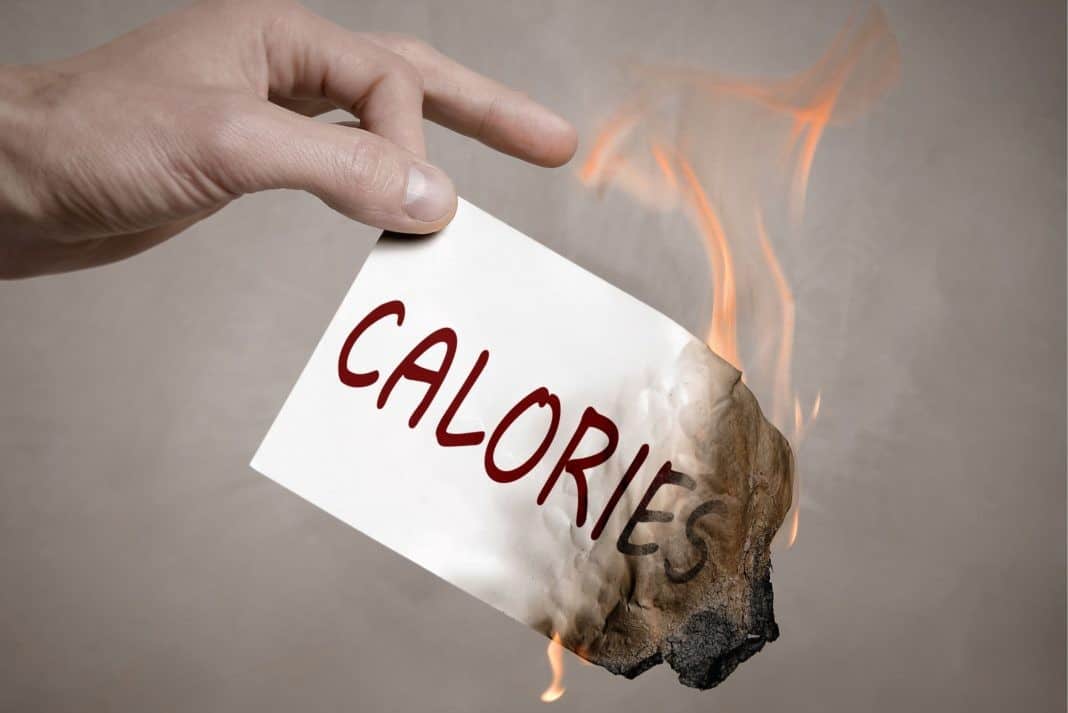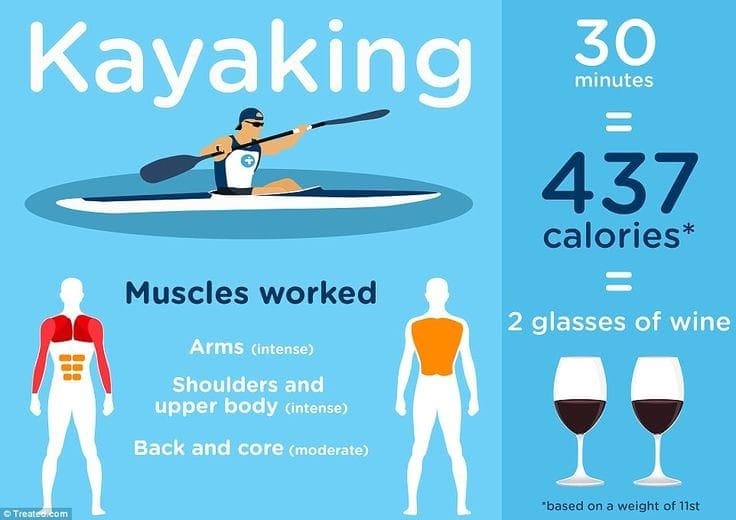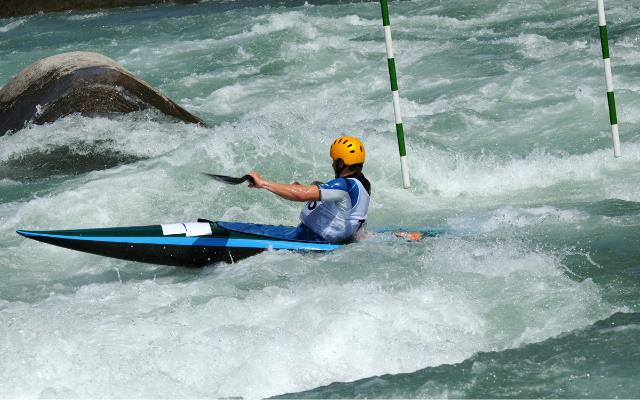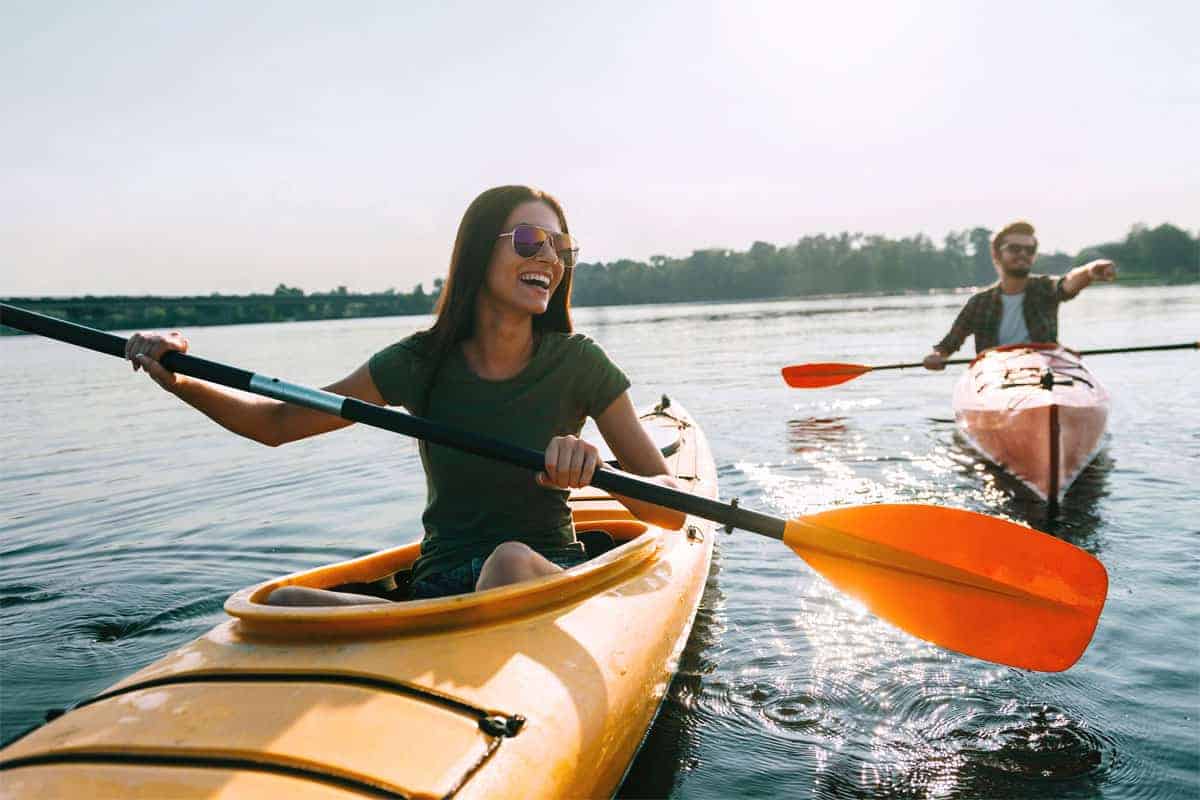As an avid kayaker and fitness enthusiast, I have always been drawn to the beauty and tranquility of being out on the water. Kayaking is not only a recreational activity but also an excellent way to stay fit and healthy. Do you know how many calories does kayaking burn?
In this article, I will delve into the various benefits of kayaking for physical fitness, explain the science behind calorie burning, discuss factors that affect calorie burn during kayaking, provide tips for maximizing calorie burn, and offer safety precautions to consider while kayaking for fitness.
Key Takeaways
- Kayaking is a great way to burn calories and stay fit.
- Kayaking can burn up to 500 calories per hour.
- Factors that affect calorie burn during kayaking include speed, weight, and water conditions.
- Kayaking can be combined with other fitness routines for optimal results.
- Safety precautions should be taken while kayaking for fitness.
The Benefits of Kayaking for Physical Fitness
When it comes to physical fitness, kayaking offers a multitude of benefits that go beyond just cardiovascular exercise. Firstly, let’s talk about the cardiovascular benefits of kayaking. When you paddle through the water with strength and determination, your heart rate increases significantly. This sustained aerobic activity helps improve your cardiovascular health by strengthening your heart muscles and increasing blood flow throughout your body.
In addition to cardiovascular benefits, kayaking also provides strength and endurance training. As you paddle against resistance from the water currents or waves, you engage multiple muscle groups in your upper body including your arms, shoulders, back muscles as well as core muscles in your abdomen and lower back. Over time, these repetitive movements build muscular strength and endurance.
Furthermore, engaging in outdoor activities like kayaking has proven mental health benefits too! Being surrounded by nature’s beauty while gliding through calm waters can be incredibly therapeutic and stress-relieving. It allows you to disconnect from everyday worries while connecting with yourself on a deeper level.
Understanding the Science of Calorie Burning
To understand how kayaking burns calories effectively during workouts or leisurely paddling sessions requires some knowledge about calories themselves – what they are and how they are burned by our bodies.
Calories are units of energy that our bodies use as fuel for various bodily functions such as breathing or digestion but also for physical activities. When we consume food, our bodies break it down into smaller molecules, releasing energy in the process. This energy is measured in calories.
When it comes to burning calories through kayaking, the intensity and duration of your paddling session play a significant role. The more intense and longer your kayaking session is, the more calories you will burn. However, other factors such as body weight and composition, water conditions, and kayak type also affect calorie burn during kayaking.
Factors that Affect Calorie Burn during Kayaking
| Factors | Description |
|---|---|
| Body Weight | The heavier the person, the more calories they burn during kayaking. |
| Intensity | The higher the intensity of kayaking, the more calories are burned. |
| Duration | The longer the duration of kayaking, the more calories are burned. |
| Water Conditions | Kayaking in rough water or against the current requires more effort and burns more calories. |
| Kayak Type | A wider kayak requires more effort to paddle and burns more calories. |
| Paddling Technique | Using proper paddling technique can increase efficiency and reduce the number of calories burned. |
1. Body weight and composition: It’s no secret that individuals with higher body weights tend to burn more calories during physical activities due to increased effort required to move their bodies against resistance. Additionally, muscle mass plays a crucial role in calorie burning as muscles are metabolically active tissues that require energy even at rest.
2. Intensity and duration of kayaking: The intensity at which you paddle determines how many calories you burn per minute. Higher intensities require more effort from your muscles and therefore result in greater calorie expenditure. Similarly, longer durations of kayaking sessions allow for sustained calorie burning over time.
3. Water conditions and kayak type: Paddling against strong currents or waves requires additional effort from your muscles compared to calm waters or using a sit-on-top kayak versus a traditional closed cockpit kayak can also impact the number of calories burned due to differences in resistance levels.
How to Calculate Calorie Burn during Kayaking
To calculate the approximate number of calories burned during a kayaking session, you can use the following formula:
Calories burned = (MET value x 3.5 x body weight in kg) / 200
The MET value (Metabolic Equivalent Task) represents the intensity level of an activity compared to resting metabolic rate (RMR). For example:
– Leisurely paddling has an MET value around 4
– Moderate paddling has an MET value around 6
– Vigorous paddling has an MET value around 8
Let’s say you weigh 70 kilograms and engage in moderate paddling for an hour. Using the formula, the calculation would be as follows:
Calories burned = (6 x 3.5 x 70) / 200 = 14 calories per minute
Therefore, during a one-hour kayaking session, you would burn approximately:
14 calories/minute x 60 minutes = 840 calories
Comparing Kayaking with Other Fitness Activities
When comparing kayaking to other fitness activities in terms of calorie burn, it’s important to consider that individual factors such as body weight and intensity level can greatly influence the results. However, on average, kayaking can be considered a moderate-intensity activity that burns a significant amount of calories.
For instance, compared to cycling at a moderate pace (MET value of approximately 7), kayaking at a similar intensity level (MET value of around 6) can burn roughly the same number of calories per minute. However, it is worth noting that kayaking engages more upper body muscles compared to cycling which primarily targets lower body muscles.
Tips for Maximizing Calorie Burn during Kayaking
To maximize calorie burn during your kayaking sessions and make the most out of this fantastic fitness activity, here are some tips:
1. Proper technique and form: Focus on using proper paddling techniques such as engaging your core muscles while rotating your torso with each stroke rather than relying solely on arm strength.
2. Increasing intensity and duration: Gradually increase the intensity or duration of your paddling sessions over time to challenge yourself physically and increase calorie expenditure.
3. Incorporating intervals and resistance training: Mix up your workouts by incorporating intervals where you paddle at higher intensities for short bursts followed by periods of lower intensity recovery paddling. Additionally, consider adding resistance training exercises such as push-ups or planks during breaks to further engage your muscles.
Safety Precautions to Consider while Kayaking for Fitness
While kayaking is a fun and effective way to burn calories and stay fit, it’s crucial to prioritize safety on the water. Here are some safety precautions to consider:
1. Importance of proper equipment and safety gear: Always wear a properly fitted personal flotation device (PFD) or life jacket, even if you are a strong swimmer. Additionally, invest in quality kayaking gear such as a helmet, spray skirt (if using a closed cockpit kayak), and appropriate clothing for weather conditions.
2. Tips for staying safe on the water: Before heading out, check weather conditions and tides, inform someone about your paddling plans, paddle with others whenever possible, avoid alcohol consumption before kayaking sessions, and be aware of potential hazards such as rocks or submerged objects in the water.
Kayaking Workouts for Different Fitness Levels
Whether you are a beginner looking to start incorporating kayaking into your fitness routine or an experienced paddler seeking new challenges, here are some sample workout routines tailored for different fitness levels:
1. Beginner Workout:
– Start with shorter paddling sessions at low intensity.
– Focus on mastering proper technique and form.
– Gradually increase duration and intensity over time.
2. Intermediate Workout:
– Incorporate intervals by alternating between moderate-intensity paddling and short bursts of high-intensity sprints.
– Experiment with different strokes like forward strokes, reverse strokes or sweep strokes.
– Explore more challenging water conditions like mild currents or small waves.
3. Advanced Workout:
– Engage in longer endurance paddles at higher intensities.
– Include resistance training exercises during breaks such as push-ups or squats performed on land near your kayak.
– Challenge yourself by exploring more demanding water conditions like rougher seas or faster-moving rivers.
Combining Kayaking with Other Fitness Routines for Optimal Results
To achieve optimal fitness results, it’s beneficial to combine kayaking with other complementary exercises and activities. Here are some examples:
1. Strength training: Incorporate regular strength training sessions focusing on your core, upper body, and lower body muscles to enhance overall muscular strength and endurance.
2. Yoga or Pilates: Practice yoga or Pilates to improve flexibility, balance, and core stability which are essential for maintaining proper paddling form.
3. Cross-training activities: Engage in cross-training activities such as swimming or hiking to work different muscle groups while still enjoying the outdoors.
Kayaking as a Fun and Effective Way to Burn Calories and Stay Fit
In conclusion, kayaking is not only a recreational activity but also an excellent way to stay fit both physically and mentally. With its cardiovascular benefits, strength-building potential, calorie-burning capabilities, and positive impact on mental health, kayaking offers a well-rounded fitness experience that can be enjoyed by people of all ages and fitness levels.
So why not give kayaking a try? Whether you choose calm lakes or adventurous rivers as your playgrounds, the rewards of this exhilarating sport are endless – from burning calories while surrounded by nature’s beauty to experiencing the joy of gliding through the water with each paddle stroke. Embrace the challenge of kayaking as a fitness activity; you won’t be disappointed!
FAQs
What is kayaking?
Kayaking is a water sport that involves paddling a small boat, called a kayak, through water using a double-bladed paddle.
What are the benefits of kayaking?
Kayaking is a great way to improve cardiovascular fitness, build upper body strength, and increase endurance. It also provides a low-impact workout that is easy on the joints.
How many calories does kayaking burn?
The number of calories burned while kayaking depends on several factors, including the intensity of the activity, the weight of the person, and the duration of the workout. On average, kayaking can burn between 300-500 calories per hour.
What muscles does kayaking work?
Kayaking primarily works the muscles in the upper body, including the arms, shoulders, back, and chest. It also engages the core muscles and can provide a full-body workout.
Is kayaking a good workout for weight loss?
Kayaking can be a great workout for weight loss, as it burns calories and engages multiple muscle groups. However, it should be combined with a healthy diet and other forms of exercise for optimal weight loss results.
What are some safety tips for kayaking?
Some safety tips for kayaking include wearing a life jacket, checking weather conditions before heading out, staying hydrated, and avoiding alcohol or drugs while on the water. It is also important to know how to properly use the equipment and to stay within your skill level.





